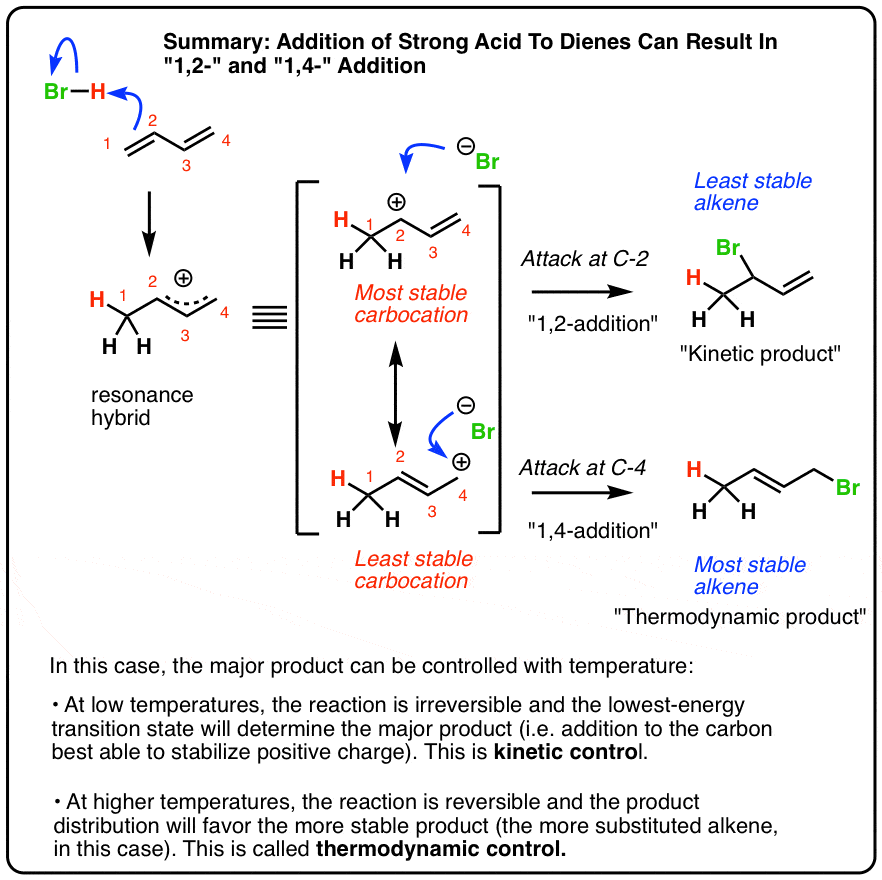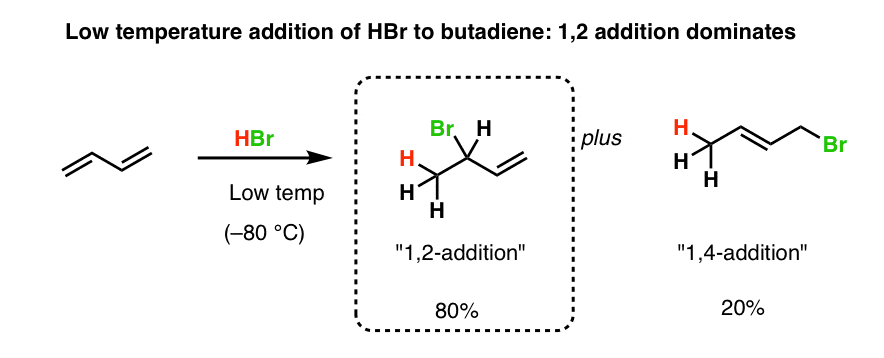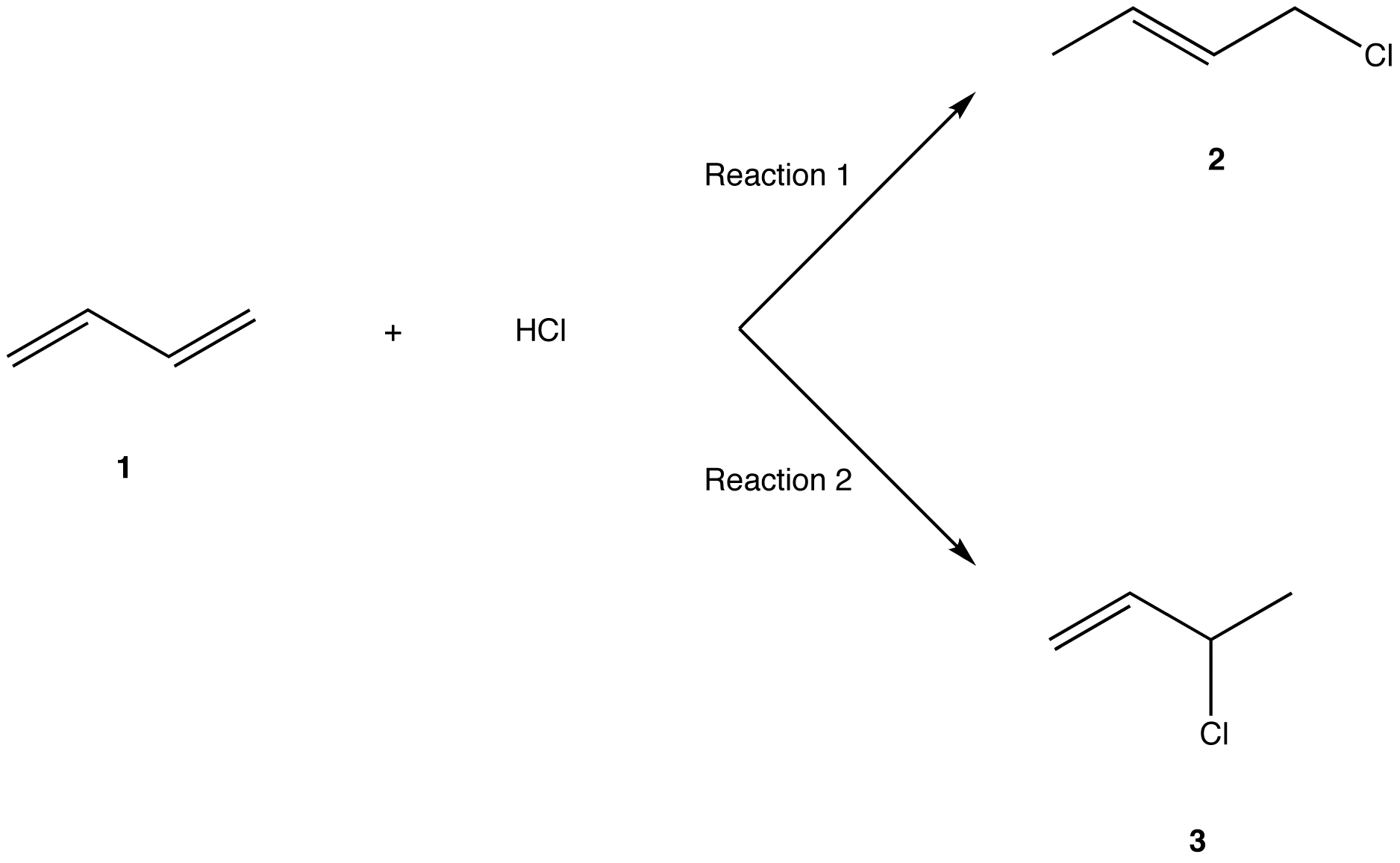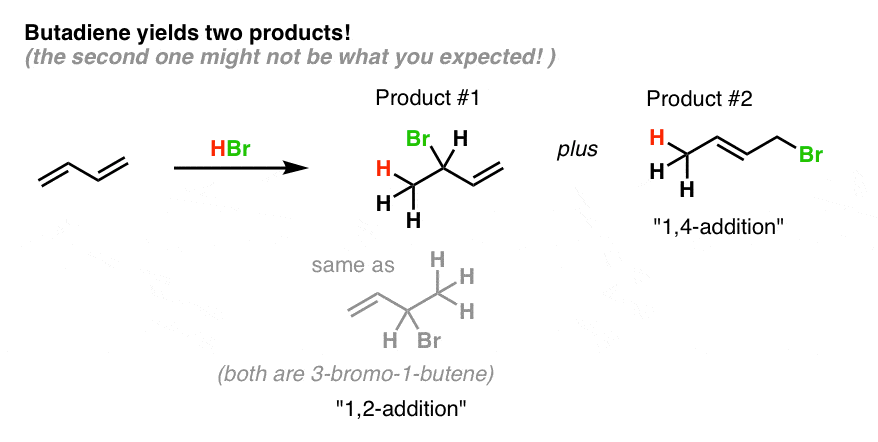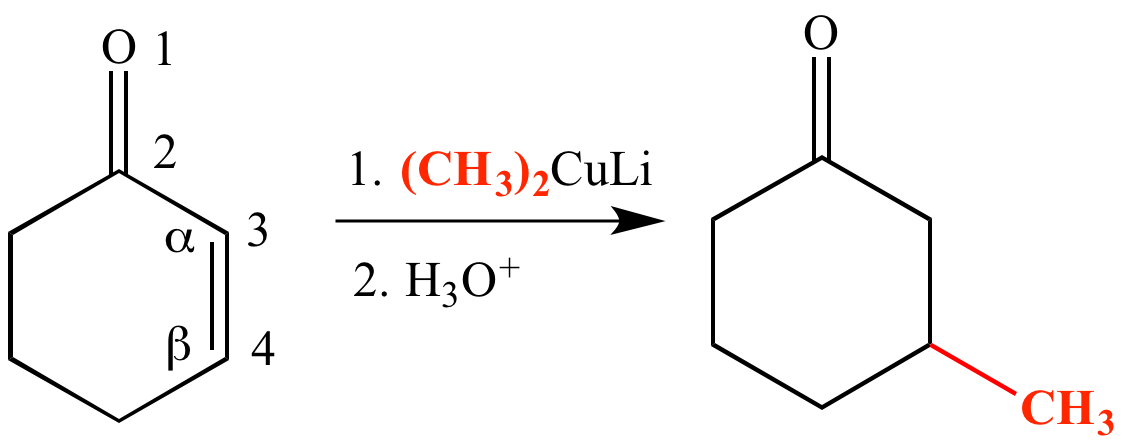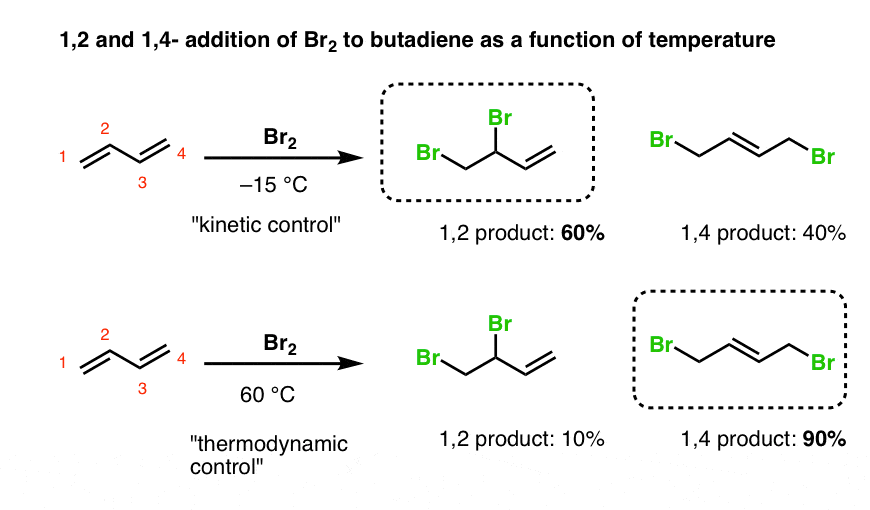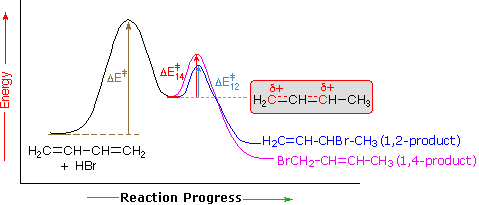1 2 And 1 4 Addition Reaction

Hence reaction 1 is called 1 4 addition and its product 2 1 4 adduct.
1 2 and 1 4 addition reaction. Michael addition is a thermodynamically controlled conjugate 1 4 addition reaction and competes with kinetically controlled 1 2 addition to c o. Alkoxides lda naoh koh etc in protic solvents like alcohols. Simple alkene compounds do not show 1 2 reactivity due to lack of polarity unless the alkene is activated with special substituents with α β unsaturated carbonyl compounds such as cyclohexenone it can be deduced from. 1 2 and 1 4 addition reaction.
In reaction 1 the net reaction is addition of a hydrogen atom to c 1 and a chlorine atom to c 4 in 1. 1 2 and 1 4 addition reaction. If the nucleophile is a weak base such as alcohols or amines then the 1 2 addition is usually reversible. The 1 2 addition starts predominating because of the proximity effect.
1 4 addition is an electrophilic addition reaction of conjugate dienes. The 1 4 adduct is the thermodynamic product of the reaction since it is the more stable product. In reaction 1 the net reaction is addition of a hydrogen atom to c 1 and a chlorine atom to c 4 in 1. Nucleophilic conjugate addition is a type of organic reaction ordinary nucleophilic additions or 1 2 nucleophilic additions deal mostly with additions to carbonyl compounds.
The regiochemistry changes when the reaction is carried out at lower temperatures. They are formed by a 1 4 and 1 2 addtion respectively. For example the addition of hydrogen bromide to 1 3 butadiene at temperatures below zero leads mainly to the 1 2 addition product while addition reactions run at temperatures above 50 c with these chemicals produces mainly the 1 4 addition product. Points e and e represent the energies of the 1 2 and 1 4 products.
Attack at c 4 provides the 1 4 product. The bases used in the reaction include. We saw that 1 2 addition has a lower activation energy. When a dihalogen such as br 2 is added to a diene such as butadiene a bromonium ion intermediate will form on one of the double bonds.
Hence reaction 1 is called 1 4 addition and its product 2 1 4 adduct. This means the competition between 1 2 and 1 4 addition is under thermodynamic control. At low temperatures 1 2 additon occurs predominantly. 1 2 and 1 4 products in addition of br 2 to butadiene.
1 4 addition is an electrophilic addition reaction of conjugate dienes. Two electrophilic addition reactions could occur between 1 3 butadiene 1 and hydrogen chloride. The effect of temperature. Attack of the nucleophile can occur at two different positions.
Since 1 2 additions to the carbonyl group are fast we would expect to find a predominance of 1 2 products from these reactions. This video is unavailable. Two electrophilic addition reactions could occur between 1 3 butadiene 1 and hydrogen chloride. Attack at c 2 provides the 1 2 product.
Whether more 1 2 addition or 1 4 addition product is created depends largely on the temperature at which the reaction is run.
